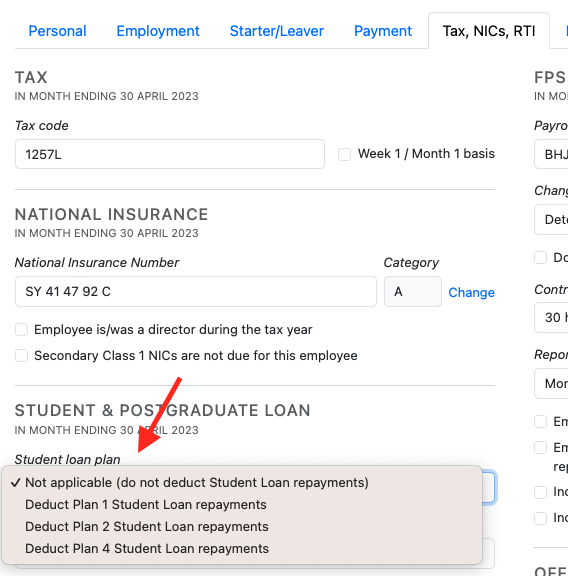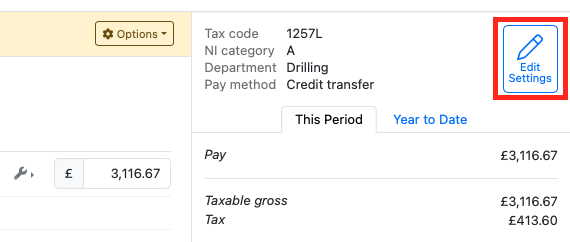Student Loan Deductions
Student Loans are part of the Government's financial support package for students in higher education in the UK. They are available to help students meet their expenses while they are studying.
HMRC is responsible for collecting repayments of these in cases where the borrower is within the UK tax system and no longer in higher education.
Student Loan Types
There are currently 4 types of student loan in operation as follows:
- Student Loan Plan 1 (SLP1) introduced from 6 April 2000
- Student Loan Plan 2 (SLP2) introduced from 6 April 2016
- Student Loan Plan 4 (SLP4) introduced from 6 April 2021
- Postgraduate Loan (PGL) introduced from 6 April 2019 (see separate help topic)
The loan deductions all operate in the same manner, being calculated as a percentage of employee earnings that are subject to Class 1 National Insurance contributions above a specific threshold (see thresholds below).
Employer Instruction
There are 3 ways that an employer can be instructed to begin to operate a loan deduction:
1) Direct instruction from HMRC:
- HMRC will issue an SL1 start notice to tell an employer to start operating a Student Loan (Plan 1, Plan 2 or Plan 4). The SL1 will contain the Plan Type that must be operated.
2) Instruction from a P45 with the ‘continue student loan’ box completed:
- If the new employee does not know the type of loan, the employer must operate a Student Loan Plan 1 (this only applies where the employee has student loans). The employee should contact the Student Loan Company to confirm their correct loan types.
3) Instruction from a Starter Checklist completed by a new employee:
- The employer should set up the loan deductions as indicated by the questions on the Starter Checklist.
Important notes:
- Should a new employee not know their student loan type, the employer must operate a Student Loan Plan 1 for Student Loan Plan Type 1, Plan Type 2 or Plan 4 only.
- If the wrong 'plan' type is being operated for a student loan (Plan 1, Plan 2 or Plan 4), HMRC will subsequently issue an SL1 notifying the correct plan type.
- Likewise, if the wrong loan 'type' is being operated, HMRC will issue the appropriate Start Notice (SL1) to notify the correct loan type.
- HMRC will instruct an employer to stop making loan deductions by issuing an SL2 stop notice to stop a Student Loan (Plan 1, Plan 2 or Plan 4).
Thresholds for tax year 2025-26

Employer's Role
The employer is responsible for:
- making deductions of student loan repayments from an employee's earnings
- keeping records of the deductions made
- paying the deductions over to HMRC
- providing HMRC with details of the deductions within each FPS submission
- giving an employee details of their deductions on their payslips and P60 certificate
- on form P45, indicating if the student loan deduction should continue
Deductions
Once an employee's income goes over the relevant threshold, the employer will deduct 9% of their income that's over the threshold towards repaying their loan.
Applying Student Loan Deductions in BrightPay
To access this utility, simply go to ‘Employees’ and select the employee’s name on the left:
1) Click on the Tax/ NICs/RTI heading
2) Select the drop down arrow for "Student Loan" and choose the applicable Student Loan Plan

3) Enter a start date and stop date, if known
4) Click Save
The payroll software will now automatically calculate and apply the appropriate student loan deduction as per the current Student Loan Deduction Tables.
Quick Edit for Student Loan Deductions
A quick-edit facility for student loan deductions can also be found in ‘Payroll’:
1) Select the employee’s name from the listing
2) Click Edit Settings at the top right of the employee's payslip
3) Within Tax/NIC Details, select the applicable Student Loan Plan
4) Enter a start date and stop date, if known
5) Click Save
Need help? Support is available at 0345 9390019 or brightpayuksupport@brightsg.com.







